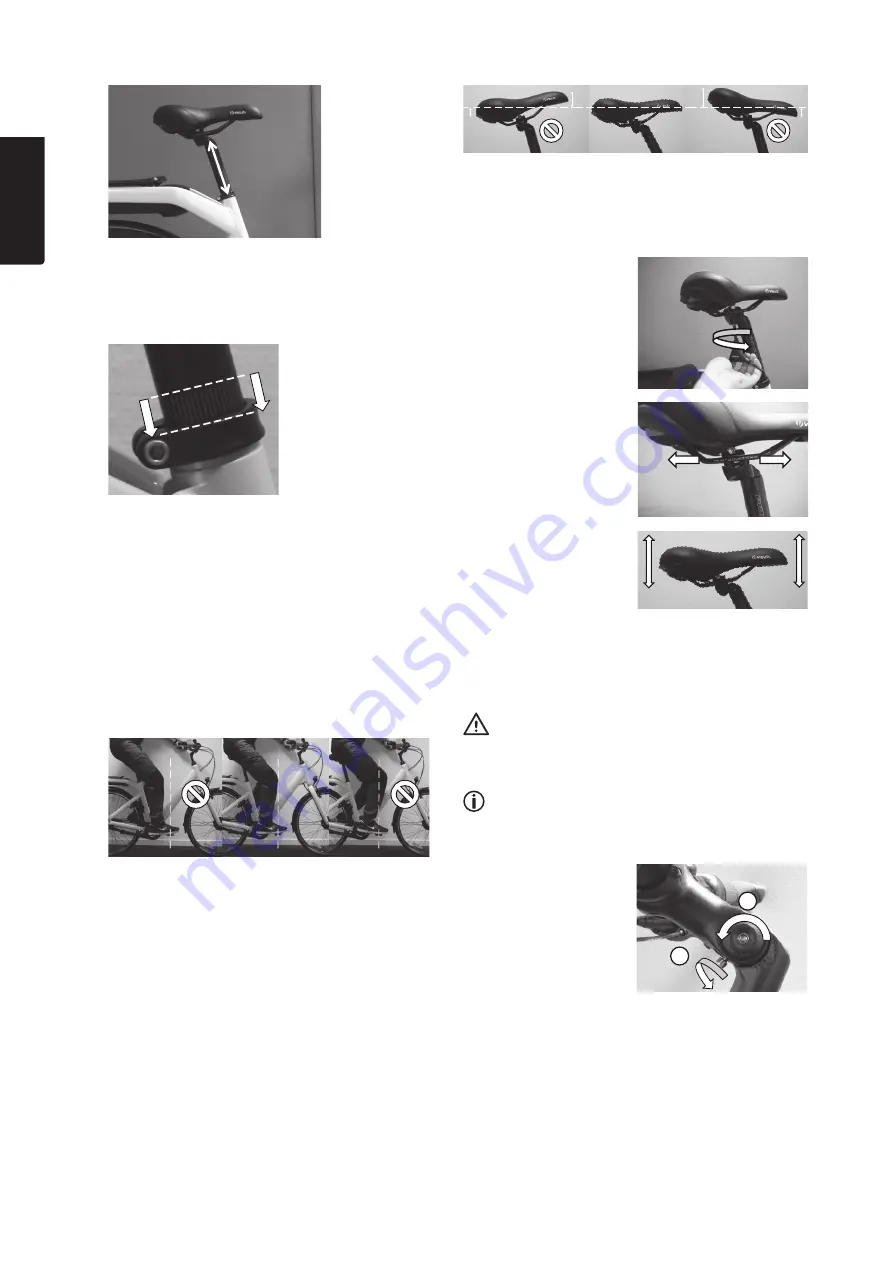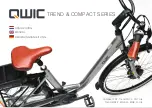
12
E
ngl
is
h
1
2
2. Twist and raise/lower the seat post (L3) until the saddle
is at the desired height.
3. Twist the saddle until it is straight – i.e. until it is aligned
with the frame.
4. Check that the marking for minimum insertion of
the seat post is
not
visible above the seat post clamp.
5. Tighten the screw.
Saddle position
The longitudinal position of the saddle is determined by
the length of your legs.
1. Rotate the crankset so that both pedals are at
the same height.
2. Sit comfortably on the saddle and place your foot on
the front pedal. The joint of your toe should be directly
above the spindle of the pedal.
3. Check that your kneecap is vertically aligned with
the pedal spindle/toe joint.
-
If your kneecap is behind this vertical line, you must
move the saddle forwards.
-
If your kneecap is in front of this vertical line, you
must move the saddle backwards.
The positioning of the angle of the saddle is a matter of
personal preference and taste, but most find it best when
the top edge of the saddle is horizontal.
Adjusting the saddle position
1. Turn the saddle clamp
(L5) socket head
screw (6 mm) anti-
clockwise 3–4 turns.
2. Move the saddle
forwards or
backwards.
3. Angle the saddle
upwards or
downwards until
you achieve
the correct angle.
4. Tighten the saddle clamp screw.
Handlebars, stem and headset
Handlebar height
Warning:
The height of the handlebars is not adjusted in the traditional
way by raising/lowering the stem in the head tube.
Information
The height of the handlebars can be adjusted by adjusting
the angle of the stem.
1. Undo the 4 mm socket
head screw (N7) a few
turns.
2. Undo the 5 mm grub
screw (N6) until the
stem can be pivoted up
and down.
Содержание 31-9779
Страница 2: ......













































